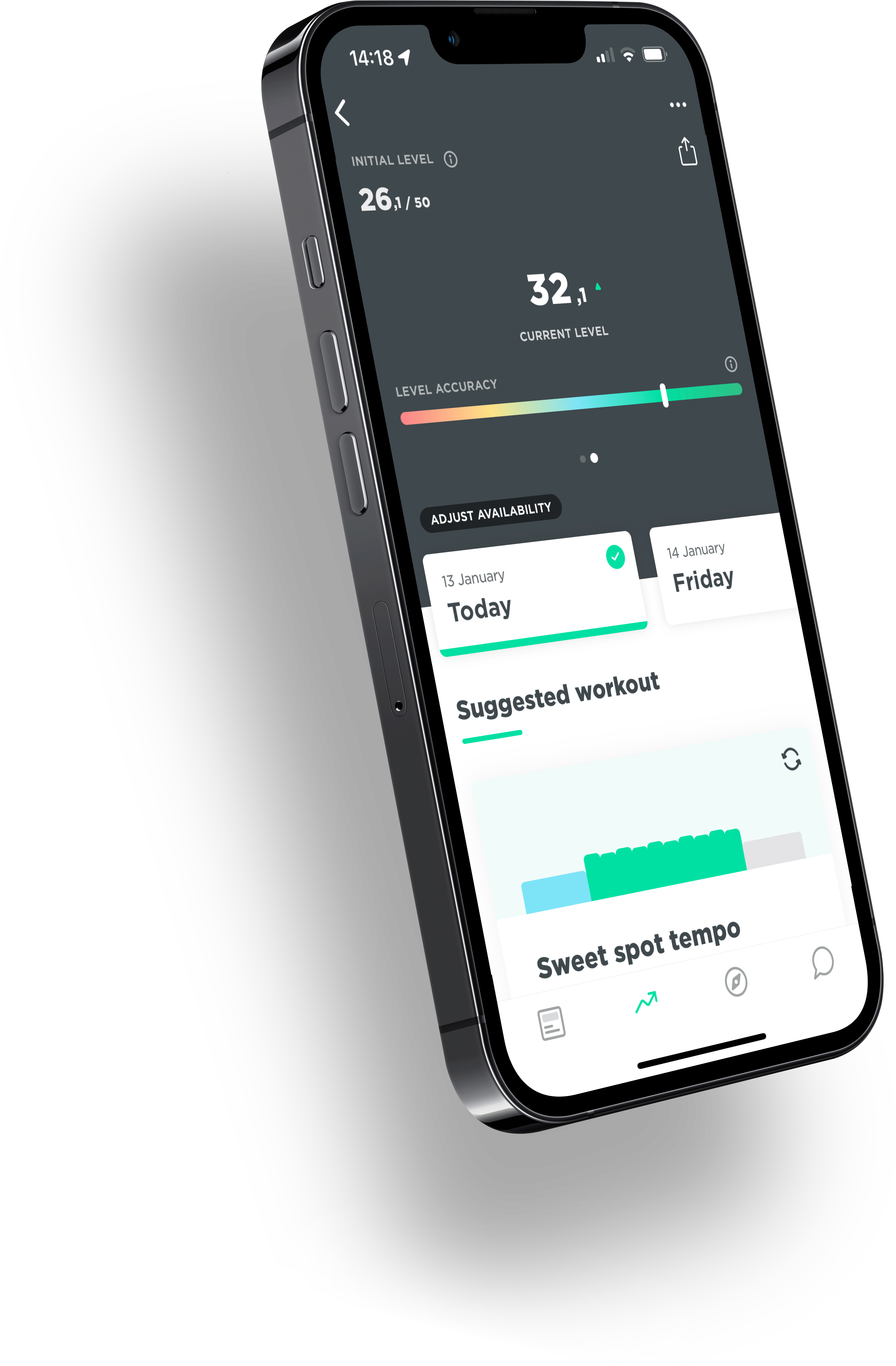One of the most beautiful things about cycling is that everyone, young and old, can still improve. In other sports that involve more power and explosive efforts, that’s often more difficult. In addition to the physical part of cycling, you can improve a lot more. For example, you can improve your sleep habits, nutrition, recovery, gear, tactics or the mental part of cycling.
Some of this is easy to measure. For example, you can use an app to calculate your calorie intake and compare it with the calories you burned according to your bike computer. It is also possible to use your mobile phone or smartwatch to keep track of the quality of your sleep. By adding more regularity to your sleep pattern you can easily gain an hour’s sleep or even improve the quality of it.
Keeping track of the physical progress is a little more complicated. Of course there are plenty of programs that show you nice charts, but what exactly do you have to look for? And how can you see if you’re making progress?
How to measure progress with cycling
First of all, we must ensure that progress can be measured objectively. But of course it is also very important to listen to your body that you are on the right track. Your feelings are especially important when you have been ill or feel exhausted. But for now, we look at indicators that can objectively show your progress. You can do this by following a standardized protocol that tracks your progress. To chart your fitness precisely, you need to make it measurable, objective and reproducible. This way you can take the same measurement before and after a period of training and compare the results.
You can do this by measuring your speed over the same lap and see if your average speed has improved. But of course weather conditions have a big influence on your speed, especially the wind, temperature and air pressure. For example, many recreational cyclists can ride an average of 30 km/h on their fixed lap in summer while they average only manage 28 km/h in winter when the air is “thicker”. Where their fitness could actually be the same. So speed is not the measure of fitness or progress. But what do you have to measure then? Actually there is one clear answer: power.
FTP test
To really measure the progress of your endurance, you need to check how long you can hold a certain level of power. A common way is to look at the maximum power you can hold for 20 minutes, with an FTP test. To measure this you also need to make sure your test is standardized. So do the test under the same conditions, on the same course, use the same power meter, do the same warm up and make sure you have taken as much rest as before the other tests. With this in mind, it is advisable to do it indoors on a home/smart trainer rather than outdoors where the weather can be an unpredictable factor. Not to mentions the roads and the other road users.
But is the value of just your 20 minutes of power the best way to determine your progress? That depends on your personal goals. If you want to ride a 15-40 minute climb as fast as possible, this value is a very good yardstick. But if you’re training for a 200 km ride with short climbs, this value is a lot less interesting. To get a broader picture of your fitness you can also do standardized 1- and 5-minute tests. Combined, these can determine your ‘power profile’.
What is a power profile
A power profile is a graph or table that shows your best power for each time interval, often between 10 seconds and 3 hours. It shows the maximum power output over the last 3 months or the best ever. Improvement of power at a certain time interval shows your improvement quite simply. Determining a power profile is currently the most widely used way in cycling to map progress. But this method does not contain everything you want to know. Often it’s not about how fast you ride up one mountain, but how fast you ride up the fifth or maybe even twentieth mountain of the day. Deep in the final of a race like the Tour of Flanders, the boys get separated from the men. After >200 km of racing, cobbles and steep climbs, someone’s power profile is less important; it’s all about the power you can still push in those final kilometers. Which rider has the most power left after such a long race?
Summarize
Let’s summarize. First of all; No matter how young or old you are, make sure you have a goal to work towards so that you know in what area you want or need to improve. Next, it is important that you test yourself regularly. Please note that not every training should be a test. Test yourself with a standardized test, every 4 to 6 weeks is more than enough to know if you are on the right track. Last but certainly not least, look not only at your maximum power but also at the power you can still deliver in the last hour of a heavy training or competition.
With this in mind, you have a sufficient base of knowledge. Determine your goal and what is needed to achieve it. Then make a plan and stick to it! If you do not feel comfortable doing it on your own, a trainer can help you make a plan and a schedule that also provides a great incentive.


